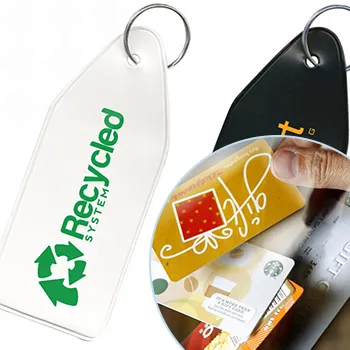Best Practices: Guidelines Storage Plastic Cards for Durability
Table of Contents []
Guidelines Storage Plastic Cards
Optimizing Longevity: Key Storage Solutions for Plastic Cards

When it comes to preserving the integrity of your plastic cards, understanding proper storage techniques is essential. Many organizations rely on plastic cards for identification, access, and accountability, making it crucial to maintain their quality and durability. To help ensure that your cards stand the test of time, we've outlined a series of comprehensive guidelines that address the best practices for plastic card storage. From avoiding harmful environmental factors to organizing cards effectively, we cover all the bases to keep your cards in top condition.
At Plastic Card ID , our expertise goes beyond supplying high-quality plastic cards and top-tier card printers we provide actionable advice that safeguards the functionality and appearance of your cards. By adhering to our guidelines, you protect your investment and demonstrate your brand's commitment to excellence every time a card is used.
For any new orders or if you have questions, our team is easily reachable. Don't hesitate to contact us at 800.835.7919 for dedicated support.
Understanding the Enemy: Environmental Factors
The first step to protecting plastic cards is acknowledging the elements that can cause damage. From sunlight to humidity, certain environmental conditions can compromise the structural integrity and appearance of plastic cards. By understanding these threats, proper storage becomes second nature, ensuring the cards last longer and perform better.
Let's delve into the various environmental factors that can affect the condition of your plastic cards:
Mitigating the Impact of Direct Sunlight
Exposure to direct sunlight is one of the most significant risks to plastic cards. UV rays can lead to discoloration and weaken the card material. To combat this, we recommend storing cards in locations that are shielded from direct sun. Consider using opaque containers or cardholders that offer UV protection.
Continuous exposure to intense light sources can degrade the visual elements of your cards over time. Prevent fading and maintain the vibrancy of your cards by keeping them away from windows and artificial light sources that emit UV radiation.
Controlling Temperature and Humidity
Extreme temperatures and high levels of humidity can cause cards to warp or become brittle. It's best to store cards in a climate-controlled space where temperature and humidity levels are kept at a moderate level. Enclosed spaces, such as drawers or cabinets, are ideal for keeping cards away from fluctuating environmental conditions.
Using silica gel packets inside storage containers is a smart, cost-effective way to control moisture levels. This extra step can make a significant difference, especially in areas where the ambient humidity is high, and can help extend the lifespan of plastic cards.
Avoiding Contact with Chemicals and Solvents
Certain chemicals and solvents can react with the plastic and printed surfaces on the cards, causing them to degrade or dissolve. Always store your plastic cards away from cleaning agents, industrial chemicals, and other substances that could potentially react with the card material.
It is vital to handle cards with clean hands and store them in chemically inert containers. This precautionary measure ensures that no unintended interactions take place, which could otherwise compromise the cards' structural and aesthetic integrity.
Maintaining Organizational Excellence: Card Arrangement and Protection

The organization is key in preventing physical damage and ensuring quick, easy access to your plastic cards. When cards are improperly stored, they can become scratched, bent, or otherwise damaged, which can reflect poorly on your business's professional image. PCID stands by the idea that a well-maintained card is a testament to your organization's attention to detail.
Cards that are neatly organized are also less likely to be lost or misplaced, which saves time and resources in the long run. Let's explore how to arrange and protect your cards effectively.
Segmenting Cards for Easy Access
Using dividers or separate containers for different types of cards helps streamline the storage process. Labeling sections clearly will reduce the time spent searching for specific cards, which is especially beneficial in high-volume or fast-paced environments.
Whether you're storing gift cards, membership cards, or access cards, having a dedicated spot for each category is a simple yet effective tool for maximizing efficiency and reducing wear and tear caused by handling.
Protecting from Physical Damage
Scratches and bends aren't just unsightly; they can prevent cards from functioning correctly. It is essential to store cards in a manner that minimizes contact with hard surfaces or sharp objects. Investing in soft-lined containers or sleeves can provide an additional layer of protection for your cards.
For added security, consider using rigid cardholders that can prevent cards from being crushed or bent under weight. These specialized holders often have individual slots for each card, which can be especially useful for maintaining the condition of cards with magnetic stripes or chips.
Stacking Cards: Do's and Don'ts
Stacking cards can be a space-saving solution, but it must be done carefully. Always stack cards flat and evenly to avoid putting stress on any one card. It's also crucial to avoid placing heavy items on top of card stacks to circumvent warping.
If stacking is necessary, make sure to rotate the stack periodically. This habit can help distribute any weight or pressure being applied to the cards over time, ensuring no single card bears the brunt of the load continuously.
Card Handling and Usage: Fostering Best Practices

Proper storage isn't just about the environment or organizational systems; it's also about how the cards are handled daily. At Plastic Card ID , we understand that the way cards are used and handled is just as important as where they are kept. Through correct handling practices, the quality and performance of the cards you distribute will consistently reflect your brand's dedication to excellence.
By establishing and promoting proper card handling practices, you can further protect your cards from premature wear and damage.
Training for Impeccable Card Handling
Ensure that everyone who interacts with your plastic cards is trained in proper handling techniques. This includes having clean, dry hands when touching the cards and avoiding bending or twisting them. Training can significantly reduce the likelihood of accidental damage.
PCID advocates for continuous education on card care within your organization. Conducting regular training sessions and providing clear guidelines can help maintain the longevity of your cards.
Avoiding Common Handling Mistakes
To steer clear of common handling errors, emphasize gentle treatment, and proper usage of all cards. For example, cards should not be used as scrapers or tools, as this can lead to scratches or chips in the card surface.
Instruct users to avoid touching the magnetic stripe or chip areas unnecessarily, as oils from fingers can accumulate and degrade these sensitive components over time.
Cleaning Cards: Maintaining Cleanliness and Function
Cards may become dirty or smudged with use, which can detract from their appearance and potentially affect their performance. Cleaning cards gently with a soft, non-abrasive cloth can remove dirt and oils without causing damage.
For a deeper clean, use a mild soap and water solution, ensuring the card is dried thoroughly afterward. Always veer away from harsh chemicals or abrasive materials that can harm the card's surface.

 Copyright © All rights reserved. Click here to view
Copyright © All rights reserved. Click here to view